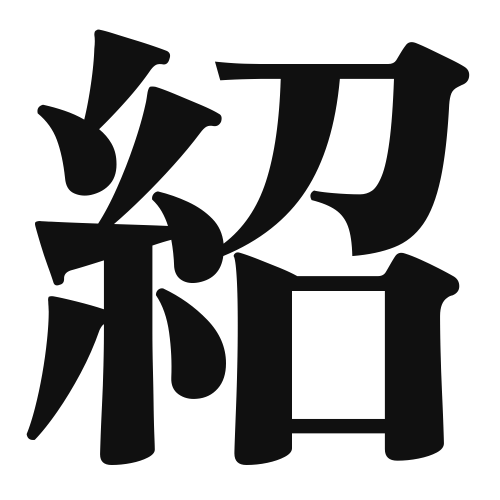1. Overview of Meaning
The kanji “紹” (shou) means “to introduce” or “to connect.” It is often used in contexts where one person or thing is presented to another, highlighting the act of making connections or introductions.
2. Formation and Radical
Formation of the Kanji: The kanji “紹” is a phonetic-ideographic character (形声文字). It combines the radical for “to speak” (言) with a phonetic component that suggests its pronunciation.
Radical: The radical of “紹” is 言 (gen), which relates to speech or language, indicating its connection to communication.
3. Examples of Usage
Common Words and Phrases: Some frequently used words that include “紹” are 紹介 (shoukai – introduction) and 紹介状 (shoukai jou – introduction letter).
Example Sentence in Daily Conversation: 彼は私を彼の友達に紹 介してくれました。 (Kare wa watashi o kare no tomodachi ni shoukai shite kuremashita.) – “He introduced me to his friend.”
4. Synonyms and Antonyms
Similar Kanji: A similar kanji is “伝” (den), which means “to convey” or “to transmit.” While both involve communication, “紹” specifically refers to introductions, whereas “伝” can refer to passing on information or messages.
Opposite Kanji: An antonym could be “遮” (sha), which means “to obstruct” or “to block,” indicating a lack of connection or introduction.
5. Cultural and Historical Background
Relation to Japanese Culture: The concept of introduction is significant in Japanese culture, where formal introductions are often essential in social and business settings.
Proverbs and Idioms: One relevant saying is “人を紹 介するは、心を紹 介する” (Hito o shoukai suru wa, kokoro o shoukai suru), which translates to “To introduce a person is to introduce the heart,” emphasizing the importance of personal connections.
